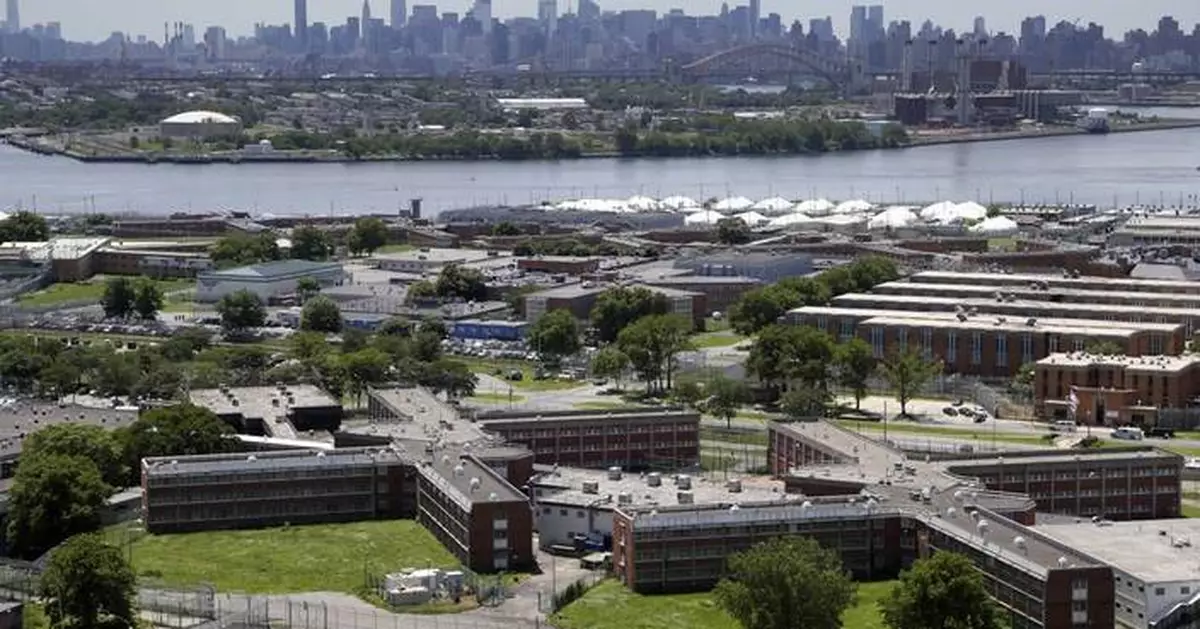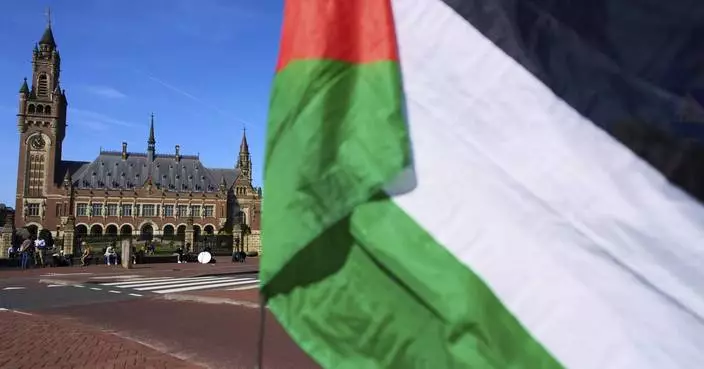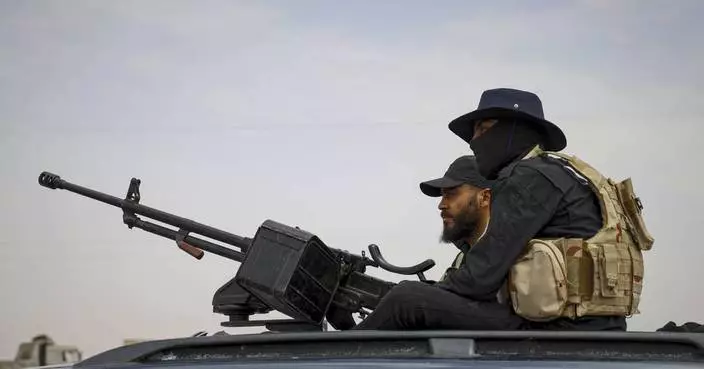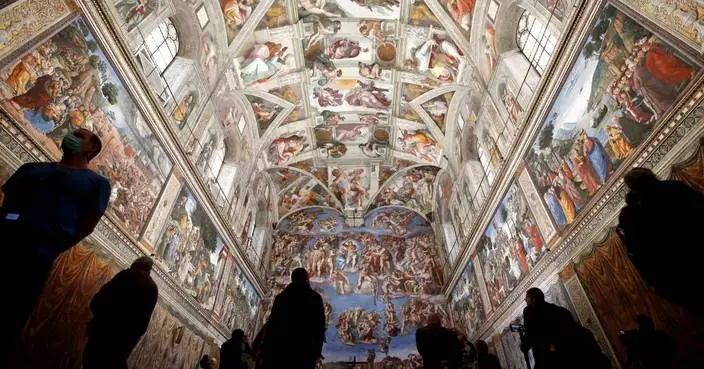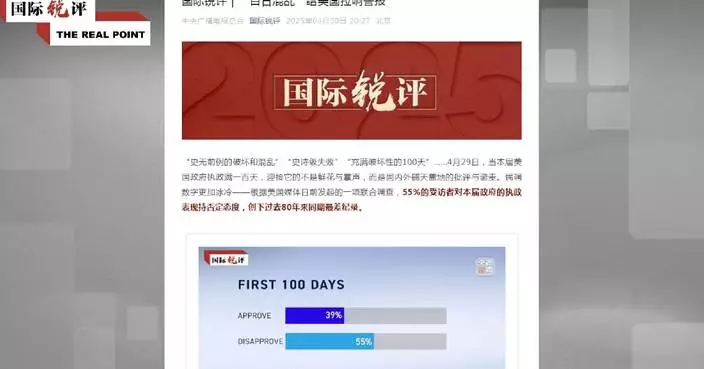NEW YORK (AP) — New York City lawmakers are suing to block Mayor Eric Adams from allowing federal immigration agents to operate within the Rikers Island jail complex.
The lawsuit, filed Tuesday by the City Council, accuses Adams of agreeing to the plan to “pay off" the Trump administration in exchange for dropping criminal charges against him.
It argues that the executive order, which allows Immigration and Customs Enforcement and other federal agencies to maintain office space at the jail, violates the city's prohibition on public officials using their office for personal benefit.
In an emailed statement, mayoral spokesperson Kayla Mamelak Altus said the city would review the council’s lawsuit. She added that it “seems baseless and contrary to the public interest in protecting New Yorkers from violent criminals.”
Adams has repeatedly denied making any deal with the Trump administration over the criminal case.
ICE agents previously had a presence on the Rikers Island facility, which is on a hard-to-reach island in the East River, but they were effectively banned from operating there in 2014 under New York City's sanctuary laws.
In December last year, Adams told Fox News after a meeting with President Donald Trump’s border czar Tom Homan that Homan would like access to Rikers, and his administration was looking into “exceptions” to the sanctuary law.
In February, following another meeting with Homan, Adams announced he would once again allow ICE agents in the jail complex to assist with gang and drug-related investigations.
The meeting came days after the Justice Department had ordered federal prosecutors in Manhattan to dismiss Adams' charges. The following day, the request was made to a federal court, a move that immigrant rights groups and Adams’ critics immediately cast as a quid pro quo.
Adams announced he would deputize his first deputy mayor, Randy Mastro, to handle all decision-making around the return of ICE to Rikers Island, in order to “ensure there was never even the appearance of any conflict.”
As a result, the April 8 executive order authorizing ICE’s return to Rikers Island was signed by Mastro, rather than Adams.
In their lawsuit, the City Council members said that delegation was both unlawful and unprecedented.
“No mayor has ever delegated executive order powers, and no executive order has been signed by anyone but the mayor,” the complaint states.
Adams, a Democrat running for reelection as an independent, has increasingly warmed to Trump since November, riling critics who say he should be doing more to block the administration’s crackdown on immigrants.
Among the many candidates seeking to replace him as mayor in the upcoming election is Adrienne Adams, the current speaker of the City Council.
“The mayor has compromised our city’s sovereignty and is now threatening the safety of all New Yorkers, which is why we are filing this lawsuit to halt his illegal order that he shamelessly previewed on the Fox News couch with Tom Homan,” Adrienne Adams said in a statement Tuesday. “When New Yorkers are afraid of cooperating with our city’s own police and discouraged from reporting crime and seeking help, it makes everyone in our city less safe.”
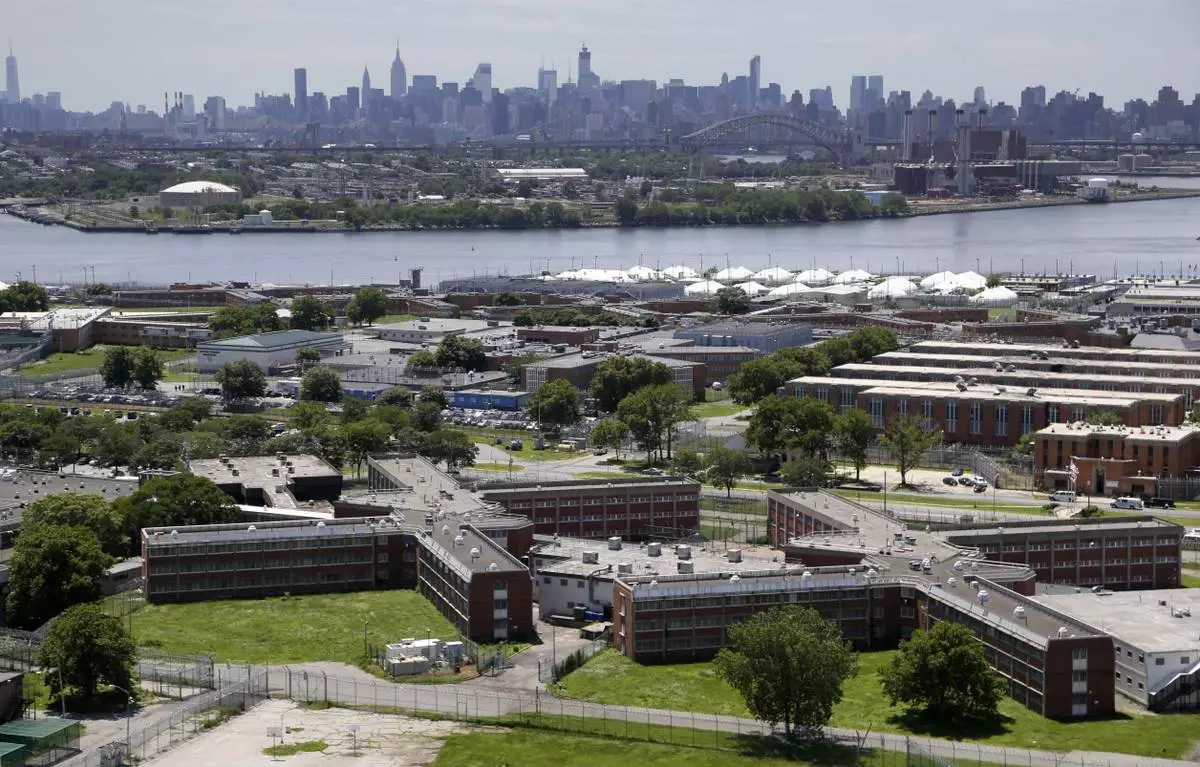
FILE - The Rikers Island jail complex stands in New York with the Manhattan skyline in the background June 20, 2014. (AP Photo/Seth Wenig, File)
VATICAN CITY (AP) — “Conclave,” the movie, may have introduced movie-goers to the spectacular ritual and drama of a modern conclave, but the periodic voting to elect a new pope has been going on for centuries and created a whole genre of historical trivia.
Here are some fun facts about conclaves past, derived from historical studies including Miles Pattenden's “Electing the Pope in Early Modern Italy, 1450–1700” and interviews with experts including Elena Cangiano, an archeologist at Viterbo's Palazzo dei Papi (Palace of the Popes).
In the 13th century, it took almost three years — 1,006 days to be exact — to choose Pope Clement IV's successor, making it the longest conclave in the Catholic Church’s history. It's also where the term conclave comes from — "under lock and key," because the cardinals who were meeting in Viterbo, north of Rome, took so long the town's frustrated citizens locked them in the room.
The secret vote that elected Pope Gregory X lasted from November 1268 to September 1271. It was the first example of a papal election by “compromise,” after a long struggle between supporters of two main geopolitical medieval factions — those faithful to the papacy and those supporting the Holy Roman Empire.
Gregory X was elected only after Viterbo residents tore the roof off the building where the prelates were staying and restricted their meals to bread and water to pressure them to come to a conclusion. Hoping to avoid a repeat, Gregory X decreed in 1274 that cardinals would only get “one meal a day” if the conclave stretched beyond three days, and only “bread, water and wine” if it went beyond eight. That restriction has been dropped.
Before 1274, there were times when a pope was elected the same day as the death of his predecessor. After that, however, the church decided to wait at least 10 days before the first vote. Later that was extended to 15 days to give all cardinals time to get to Rome. The quickest conclave observing the 10-day wait rule appears to have been the 1503 election of Pope Julius II, who was elected in just a few hours, according to Vatican historian Ambrogio Piazzoni. In more recent times, Pope Francis was elected in 2013 on the fifth ballot, Benedict XVI won in 2005 on the fourth and Pope Pius XII won on the third in 1939.
The first conclave held under Michelangelo's frescoed ceiling in the Sistine Chapel was in 1492. Since 1878, the world-renowned chapel has become the venue of all conclaves. “Everything is conducive to an awareness of the presence of God, in whose sight each person will one day be judged,” St. John Paul II wrote in his 1996 document regulating the conclave, “Universi Dominici Gregis.” The cardinals sleep a short distance away in the nearby Domus Santa Marta hotel or a nearby residence.
Most conclaves were held in Rome, with some taking place outside the Vatican walls. Four were held in the Pauline Chapel of the papal residence at the Quirinale Palace, while some 30 others were held in St. John Lateran Basilica, Santa Maria Sopra Minerva or other places in Rome. On 15 occasions they took place outside Rome and the Vatican altogether, including in Viterbo, Perugia, Arezzo and Venice in Italy, and Konstanz, Germany, and Lyon, France.
Between 1378-1417, referred to by historians as the Western Schism, there were rival claimants to the title of pope. The schism produced multiple papal contenders, the so-called antipopes, splitting the Catholic Church for nearly 40 years. The most prominent antipopes during the Western Schism were Clement VII, Benedict XIII, Alexander V, and John XXIII. The schism was ultimately resolved by the Council of Constance in 1417, which led to the election of Martin V, a universally accepted pontiff.
The cloistered nature of the conclave posed another challenge for cardinals: staying healthy. Before the Domus Santa Marta guest house was built in 1996, cardinal electors slept on cots in rooms connected to the Sistine Chapel. Conclaves in the 16th and 17th centuries were described as “disgusting” and “badly smelling,” with concern about disease outbreaks, particularly in summer, according to historian Miles Pattenden. “The cardinals simply had to have a more regular and comfortable way of living because they were old men, many of them with quite advanced disease,” Pattenden wrote. The enclosed space and lack of ventilation further aggravated these issues. Some of the electors left the conclave sick, often seriously.
Initially, papal elections weren’t as secretive, but concerns about political interference soared during the longest conclave in Viterbo. Gregory X decreed that cardinal electors should be locked in seclusion, “cum clave” (with a key), until a new pope was chosen. The purpose was to create a totally secluded environment where the cardinals could focus on their task, guided by God’s will, without any political interference or distractions. Over the centuries, various popes have modified and reinforced the rules surrounding the conclave, emphasizing the importance of secrecy.
Pope John XII was just 18 when he was elected in 955. The oldest popes were Pope Celestine III (elected in 1191) and Celestine V (elected in 1294) who were both nearly 85. Benedict XVI was 78 when he was elected in 2005.
There is no requirement that a pope be a cardinal, but that has been the case for centuries. The last time a pope was elected who wasn’t a cardinal was Urban VI in 1378. He was a monk and archbishop of Bari. While the Italians have had a stranglehold on the papacy over centuries, there have been many exceptions aside from John Paul II (Polish in 1978) and Benedict XVI (German in 2005) and Francis (Argentine in 2013). Alexander VI, elected in 1492, was Spanish; Gregory III, elected in 731, was Syrian; Adrian VI, elected in 1522, was from the Netherlands.
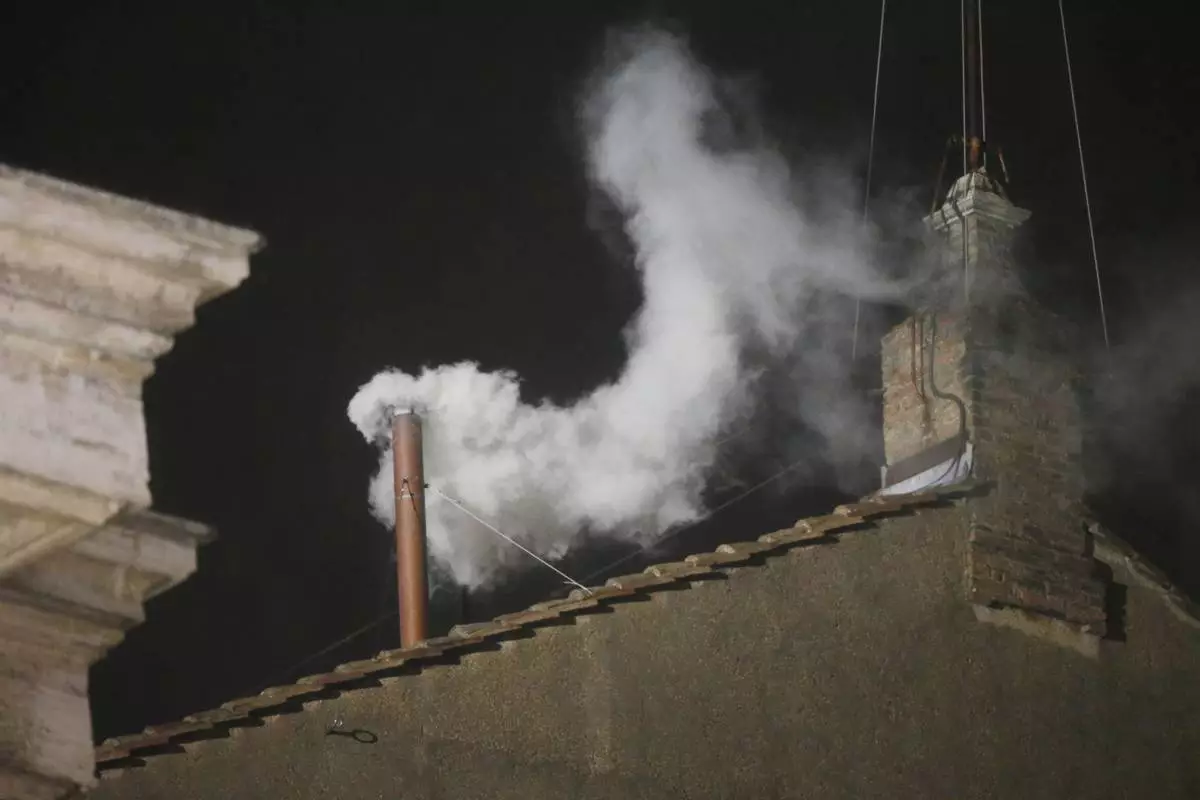
FILE - White smoke is seen billowing out from the chimney of the Sistine Chapel and announcing that a new pope has been elected on Wednesday, March 13, 2013. (AP Photo/Gregorio Borgia, File)
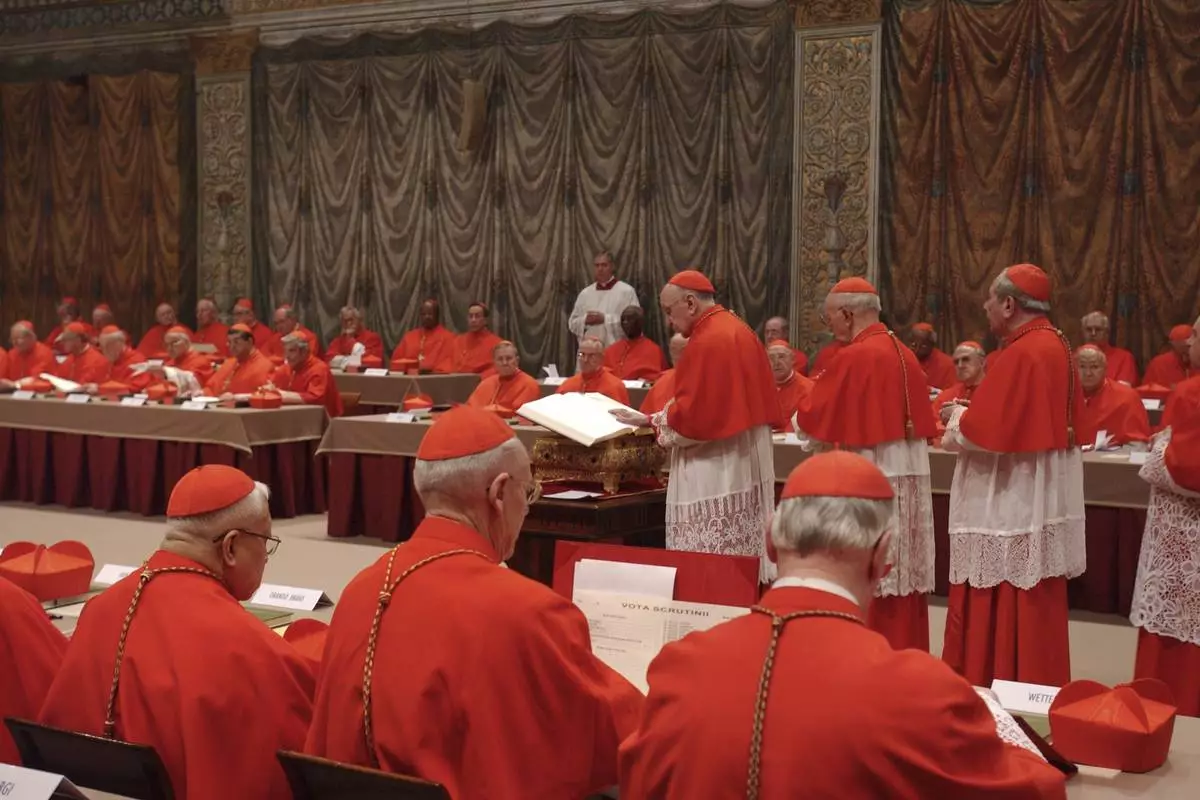
FILE - Italian Cardinal Giacomo Biffi, center, takes an oath at the beginning of the conclave to elect the next pope in the Sistine Chapel at the Vatican, Monday, April 18, 2005. (AP Photo/Osservatore Romano via AP, File)
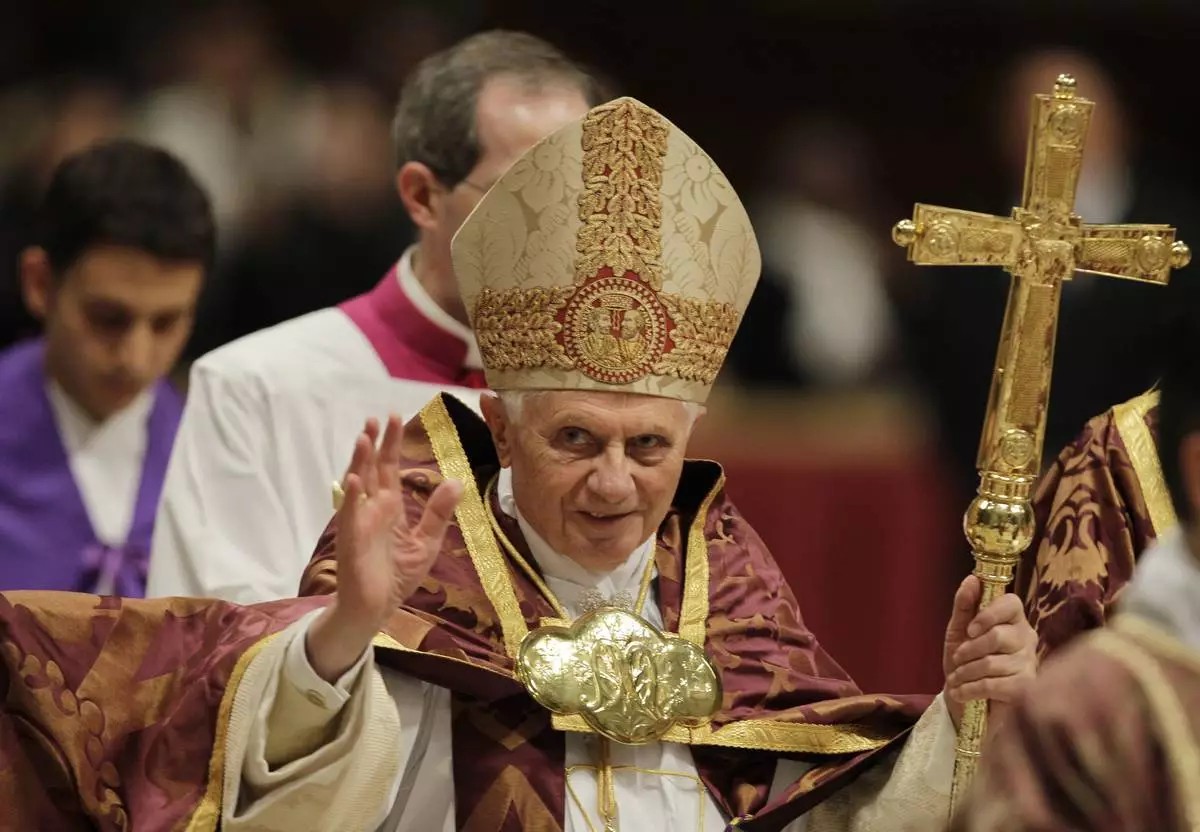
FILE - Pope Benedict XVI blesses the faithful as he arrives at St. Peter's Basilica in the Vatican, Dec. 16, 2010. (AP Photo/Alessandra Tarantino, File)
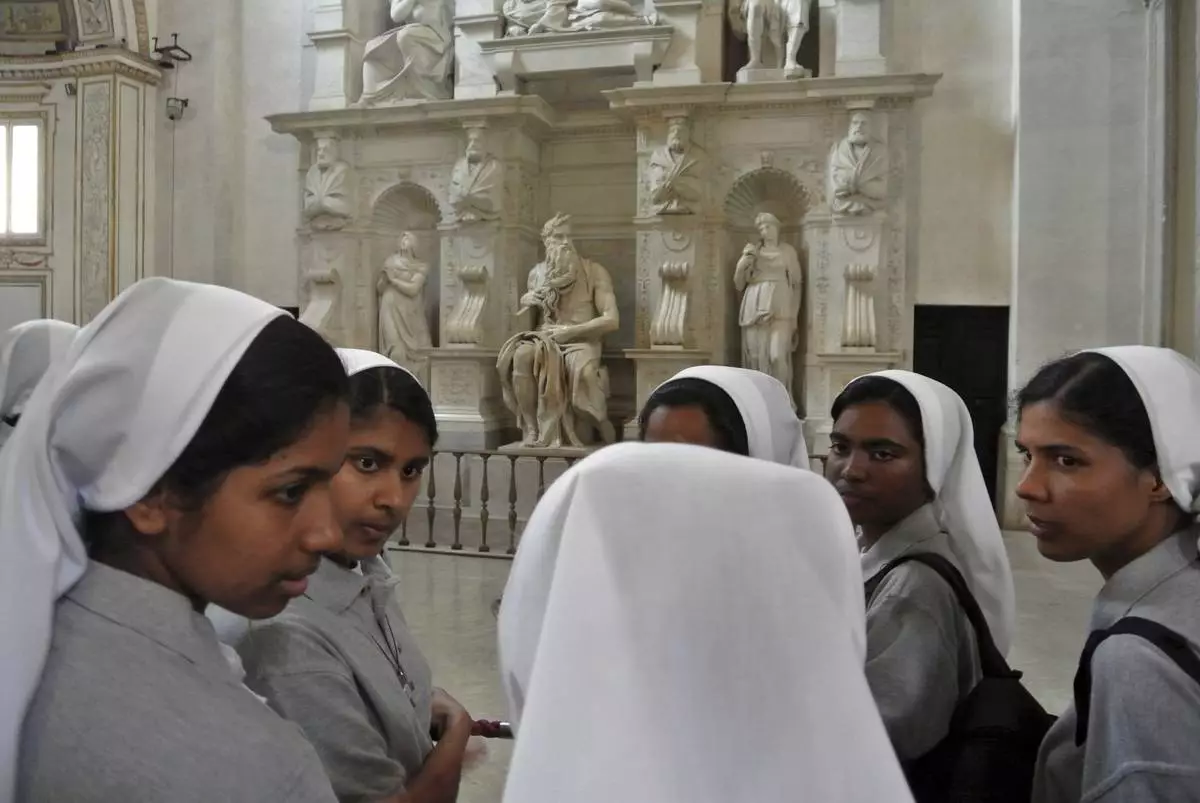
FILE - Nuns talk in front of Italian Renaissance artist Michelangelo Buonarroti's Moses statue, part of a funerary monument he designed for Pope Julius II inside San Pietro in Vincoli Basilica in Rome, July 2, 2013. (AP Photo/Gregorio Borgia, File)
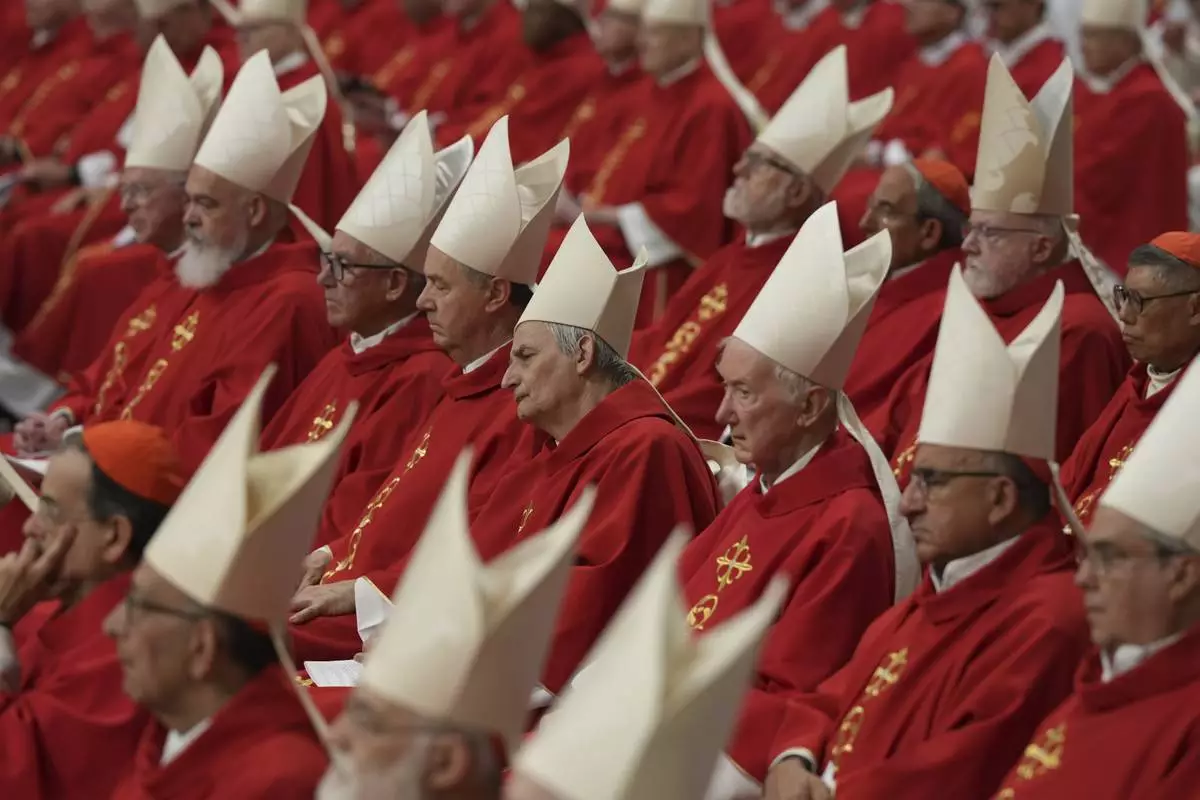
Cardinal Matteo Zuppi, centre, attends a mass on the third of nine days of mourning for late Pope Francis, in St. Peter's Basilica at the Vatican, Monday, April 28, 2025. (AP Photo/Andrew Medichini)
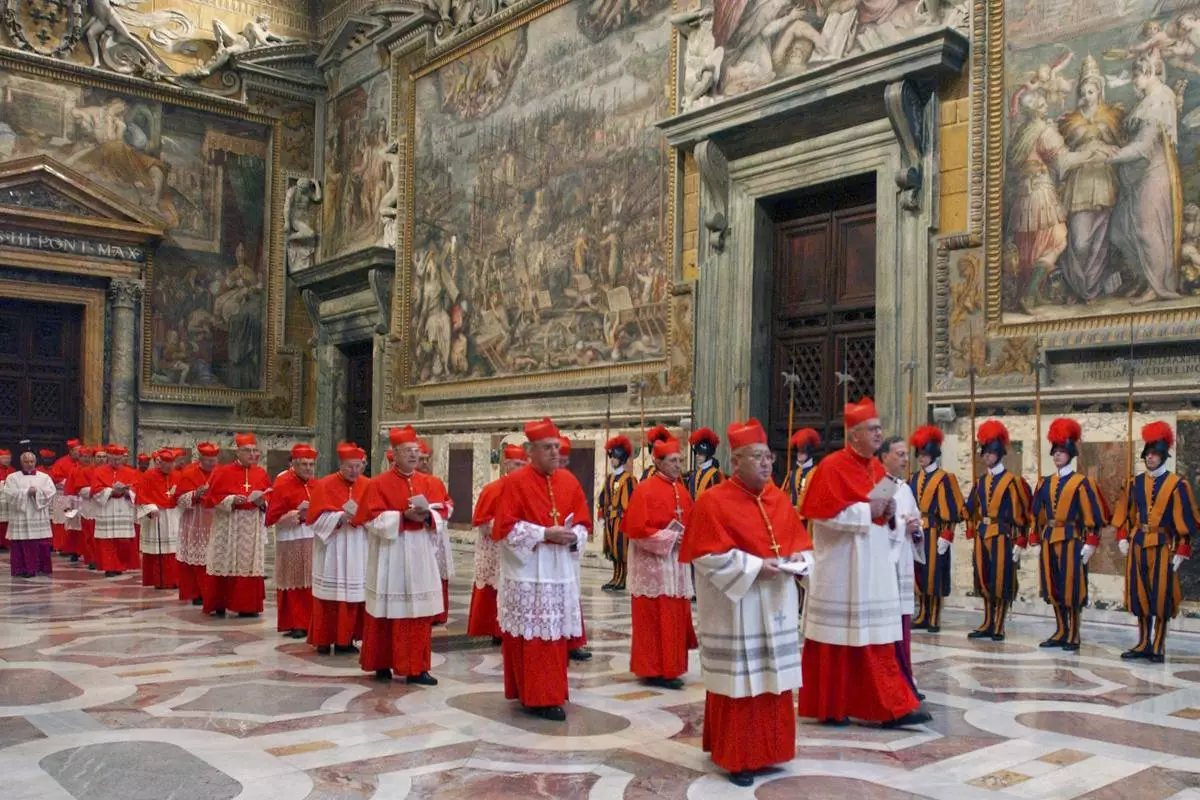
FILE - Cardinals walk in procession to the Sistine Chapel at the Vatican, at the beginning of the conclave, April 18, 2005. (Osservatore Romano via AP, File)



